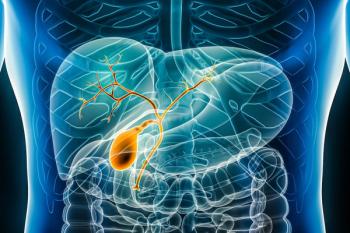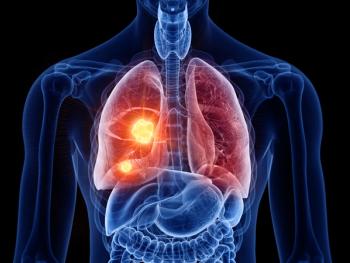
Secondhand Exposure to Electronic Nicotine Delivery Systems Linked to Asthma Symptoms in Youth
A new study in Chest has identified a correlation between electronic nicotine delivery systems (ENDS) and asthma symptoms in youth. The association was independent of cigarette smoking and ENDS use and exposure to secondhand cigarette smoke.
While current research suggests an association between electronic nicotine delivery systems (ENDS) use among youth and an increase in asthma exacerbation, along with increased coughing and wheezing in adolescents who use e-cigarettes,1 little has been known about the association of secondhand ENDS aerosol exposure and asthma control in youth. Now, a new study in Chest has identified a correlation between ENDS and asthma symptoms in youth.
The study, conducted by researchers at the Division of Intramural Research at the National Institute on Minority Health and Health Disparities in Bethesda, found that the association was independent of cigarette smoking and ENDS use and exposure to secondhand cigarette smoke.2 The authors recommend that their study findings highlight the need for counseling by healthcare providers to include information about the potential risk of exposure to ENDS aerosols for youth with asthma.
The information was gathered from the responses of pre-teens and teenagers (ages 11 to 17 years) who participated in the 2016 school-based, cross-sectional Florida Youth Tobacco survey, conducted by the Florida Department of Health. Respondents self-reported a diagnosis of asthma (n = 11,830) and reported asthma attacks in the past 12 months, along with demographic information, cigarette use, cigar use, hookah use, ENDS use, past 30-day secondhand smoke exposure, and past 30-day secondhand ENDS aerosol exposure. Statistical models using weighted multivariable logistic regression models were used to examine the association between secondhand ENDS aerosol exposure and past-12-month asthma attack status, adjusting for covariates.
The study found:
- Overall, 21% of youth with asthma reported having an asthma attack in the past 12 months and 33% reported secondhand ENDS aerosol exposure.
- Secondhand ENDS aerosol exposure was associated with higher odds of reporting an asthma attack in the past 12 months (P <.01)
- The association between secondhand exposure to ENDS aerosols and asthma exacerbations was significant (adjusted odds ratio, 1.27; 95% CI, 1.11-1.47) even after adjusting for demographics, individual use of tobacco product, and secondhand smoke exposure.
- Asthma exacerbations were more prevalent among females, non-Hispanics, current cigarette users, and those exposed to secondhand cigarette smoke (P <.05).
- Asthma exacerbations were less prevalent among youth ages 14-17 versus those ages 11-13 and Hispanic/non-Hispanic black versus non-Hispanic whites (P <.05).
The researchers conclude that the study shows an association between secondhand exposure to ENDS aerosol and asthma exacerbations among youth with asthma, and they note that although families may believe exposure to aerosols from ENDS are benign, they are not. They believe that while the relationship is further explored, healthcare professionals may consider both including ENDS aerosol exposure as a possible trigger in asthma self-management and in action plans and updating asthma home environment assessments to include exposure to ENDS aerosols.
“Future research is needed to evaluate the longitudinal relationship between secondhand ENDS aerosol exposure and asthma control,” the researchers conclude.
References
1. Stratton K, Kwan LY, Eaton DL, eds. Committee on the Review of the Health Effects of Electronic Nicotine Delivery Systems. National Academies of Sciences, Engineering, and Medicine. Public Health Consequences of E-cigarettes. A consensus study report. National Academies Press, Washington DC. The National Academies of Sciences, Engineering, and Medicine website. nap.edu/read/24952/chapter/1. Published January 23, 2018. Accessed November 8, 2018.
2. Bayly JE, Bernat D, Porter L, Choi K. Secondhand exposure to aerosols from electronic nicotine delivery systems and asthma exacerbations among youth with asthma [published online October 22, 2018]. Chest. doi: 10.1016/j.chest.2018.10.005.
Newsletter
Stay ahead of policy, cost, and value—subscribe to AJMC for expert insights at the intersection of clinical care and health economics.





























































